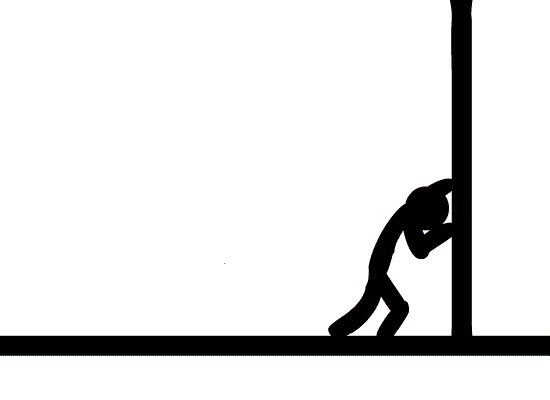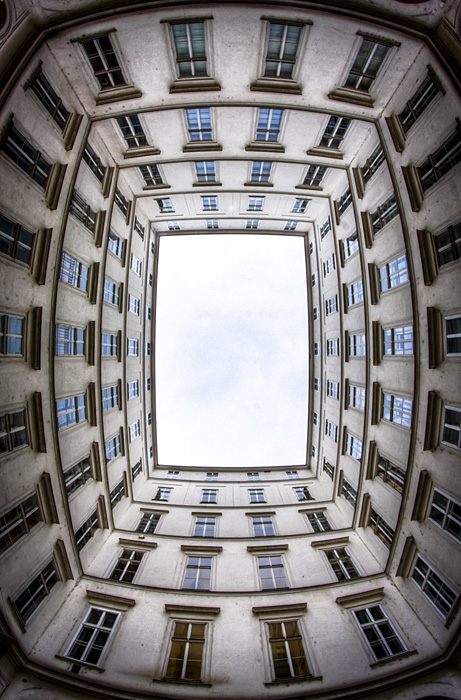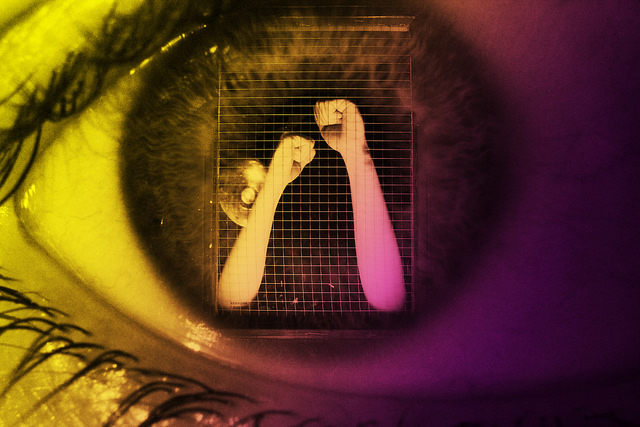Claustrophobia
29 Nov 2016
Psychologist Dr. Doping tells about congenital and acquired phobias, fear and classification methods to overcome claustrophobia.

Claustrophobia is a psychopathological syndrome, a mental disorder that is manifested outwardly phenomenologically that the person is afraid of closed spaces: elevators, small rooms, tunnels, basements, cars and so on. This definition is clear enough, but at the same time is not enough accurate, because people fear is not so much a specific closed space as a repetition of their own negative experiences encountered at this location. He is afraid of losing control in a confined space, afraid of suffocating, afraid of what will happen to him at all something abstract, but always "horrible" and that no one in this confined space it has not come to the rescue.
Accordingly, the patient connects to associate their pain to a specific place. And after that he formed avoiding enclosed spaces: elevators, caves, and so on. You can imagine such a huge list of places where, in the opinion of the patient, it can suffocate, or no one will come to the rescue.
Fear is irrational patient. Man realizes that the probability that in a confined space with him happens something bad, is extremely small. Especially in comparison to what can happen in an open space with him: it may be on the street hit by a car, can happen something else ... There is disorder, the opposite of claustrophobia - is agoraphobia, a fear of open spaces. And yet people fear and avoid confined spaces, and this has a significant negative impact on his life.
Degree classification of claustrophobia and fear
A separate classification claustrophobia syndrome is not accepted in medicine. There are a classification of fear. Depending on how the negative impact of fear has on people, judge the degree of severity of claustrophobia. In one case, a person can suffer, take a breath and enter the elevator. Maybe it have some frightening thought, but nevertheless it will reach, will continue to think about the fear of too much will not.
In another case, one simply can not enter in any elevator can not enter into any enclosed space. It actually turns out to be locked up at home, in a safe environment, and it does not have the possibility to go somewhere and do something.

It should be noted that claustrophobia may be observed as an independent neurotic condition in which there are no other mental disorders. But as can be claustrophobic concomitant symptom or syndrome that occurs, for example, depression or schizophrenia. Claustrophobia is also common and organic brain damage.
If desired, you can be classified claustrophobic in places such as "liftofobiya", but it is not accepted. You can highlight some features of schizophrenic, depressive and neurotic claustrophobia. But such work is very small. And soon, it's not so much a classification, but rather a description of various embodiments of occurrence of claustrophobic mechanisms.
Causes of claustrophobia
Some of the earliest concepts of the emergence is not only of claustrophobia, and other anxiety-phobic disorders - a concept that originated in behavioral psychology and behavioral therapy. Initially, they relied on the classic teachings of Pavlov on conditioned reflexes. The essence of this approach is that there is a formation of pathological reflex. There is an abnormal, pathological learning, that is, some relatively neutral stimulus, once bound man to his own fear, becomes a stimulus, which a person begins to panic fear. In this case, if we talk about claustrophobia, it is a closed space together with the fear that arose at that time. They appear at the same time, the fixation and there is conditional reflex connection: if there is such a place, that is such an emotion.

Of course, there is an opposite point of view. It is connected with the evolutionary-genetic trend. In evolutionary psychologists believe that such phenomena are not associated with the acquisition of fear, not to learning, and the fact that the phobic reactions from are preset and are rudimentary forms of adaptive reactions, reactions of the organism's adaptation, which are formed in the evolution.
The enclosed space in the evolution is considered to be a signal for the animal, because the risk of suffocation in a cave or burrow much higher than dying from lack of air in the open space. A space is open on predators and so on. These are different kinds of fear, but nevertheless they are genetically preserved. And as soon as the patient develops such symptoms, it can be seen as rolling back to an earlier evolutionary stage. It is believed that the patient activated unconditioned reflexes, there is an instinctive, but exaggerated behavior, inadequate in our contemporary socio-cultural conditions.
These two points of view considered claustrophobic as congenital and acquired as a fear. Maybe some kind of evolutionary predisposition and there - take, for example, the emotional response. Neurobiological evidence suggest that in animals and humans at this point activates the amygdala - structure, which is often activated in response to a situation threatening stimuli. And if it is observed in animals and in humans, then it somehow formed in the course of evolution. And then on this part of the learning is applied. It is obvious that patients who come to psychiatrists with claustrophobia, the disease does not come from nowhere. Some experience of negative emotions in connection with the closed space of these people have.
Accordingly, it can be interpreted differently by psychotherapists. In particular, it is treated in analysis, that is not only the biological predisposition but predisposition at early childhood development. The child may not feel protected by her mother at an early stage of ontogeny, and he unconsciously formed this conflict, which is also an additional factor. And then, when he had grown up, he finds himself in an enclosed space, he has a fear, it is fixed to this fear. And can continue to develop such a vicious circle: it avoids these closed spaces, and as soon as gets there, he immediately updated evolution and early childhood traumatic experiences that translate into fear, and it strengthens the phobia.
Individual fear
If we talk about the relationship of reasons, each individual case is unique. It is necessary to collect the history of the patient, it is necessary to take into account the clinical picture, watching as shown claustrophobia: Is it generalized to all enclosed spaces or she is specific, that is, only people afraid of, for example, lifts or car.

It is necessary to know when the first time there was this fear, how long it is amplified, then weakened, under the influence of some reasons.
We need to understand whether some negative experiences associated with a particular subject when he was - in childhood or more recently. A person could get stuck in an elevator, and at this point he developed a panic attack. But it is not connected with a lift as such and not with the fear of enclosed spaces - it just happened. For example, people do not get enough sleep, drink lots of coffee, and it so happened that in this place and at this point he had a panic attack, was learning, the formation of a conditioned reflex. Another thing, when it happens to a child, and then the man says: "Since I can remember, I'm afraid of enclosed spaces." In each case it is necessary to understand when, how and what to do with the patient, and psychotherapy, too, depends on it.
Symptoms of claustrophobia
Symptom - is primarily avoiding the frightening space, panic attacks can not be. One simply does not go into the room, which he fears he avoids such places. If it is to go down, the situation may develop in different ways. It may be expressed deployed panic attack with a strong autonomic storm, or maybe it will just shake, and he tries to get out of this situation. Manifestations of claustrophobia may be different, but it is a central manifestation of anxiety. You can reduce anxiety with Phenibut, Selank, Phenazepam and Afobazol.
If claustrophobia is shown as part of an organic mental disorder, some brain damage, epilepsy, the great fear of the patient can be accompanied by simple visual illusions and hallucinations sometimes. However, in the case of an ordinary neurosis, this does not happen and should not happen. If claustrophobia occurs in schizophrenia, it may be auditory hallucinations. But neurotic claustrophobia should not show any hallucinatory phenomena.
Therapies
Treatment methods of claustrophobia are based on the principle of "lock and key" that is, what mechanisms, such and treatments. If we found out in the course of complex psychological diagnosis that the central mechanism of fear is suddenly arisen training and formed the association, the behavioral therapy will be assigned. We are destroying the old pathological reflex and form a new, healthier way to respond to threatening stimuli. This is called the method of exposure: we build scale through the levels of fear and anxiety of the patient.

Consider an example with the terror lift. For example, enter the elevator - it's 100% fear. And just look at the picture of the elevator - it's 1% of fear. There are a variety of options: step up to the elevator, the elevator to the touch and so on. The therapist together with the patient doing a every step on this scale, from 1 to 100. They discuss the patient's thoughts that arise at each stage of the ladder, to discuss the irrationality of these thoughts and in opposition to them pick some rational arguments. Together they go to the elevator and at this moment learn to calm down. Once the patient enters the elevator, he already knows the tricks, to reassure themselves, and then quietly lift operates. After some time, he forms the habit to settle down every time when it comes into the elevator. To achieve better results, psychoanalysts analyze the children's trauma and the patient's fears, fantasies and dreams are interpreted, which can suggest a way out. In the process of comprehensive psychotherapeutic treatment your doctor may prescribe tranquilizers to the patient, and in the case of combined disorders - antidepressants and antipsychotics.
Research Perspectives of claustrophobia
As a claustrophobic study of prospects can be called, first, psychopathology (psychiatric clinical) studies. They need to clarify that the clinical picture of claustrophobia, which is now observed in our society. Second, it is necessary to improve methods of diagnosis of the disorder in the population through the development of compact, valid and reliable questionnaire. It will clarify the epidemiological situation. Thirdly, it is important to study the mechanisms of psychological claustrophobia on the basis of the integration of behavioral psychology data, cognitive science and psychoanalysis. Following these investigations, it is necessary to study the effectiveness of integrative psychotherapy these states. Finally, fourthly, neurobiological studies represent a special challenge, since patients with difficulty kept the procedure magnetic resonance imaging, which now defines the trends of brain sciences. These technical problems need to be addressed with a view to building a biopsychosocial model of the nature and treatment of claustrophobia and other phobic disorders.
Now people are working on the improvement of methods of psychological treatment. For example, there are a variety of research applications of modern technologies for the treatment of claustrophobia and other phobias. For example, the technology of virtual reality, in which you can simulate the space: a man puts on a helmet and sees around him a vast space that begins to narrow; at least narrowing the therapist pronounces the patient exercises, he says that include relaxation techniques, when to start to calm down, and so on.

 Cart
Cart





